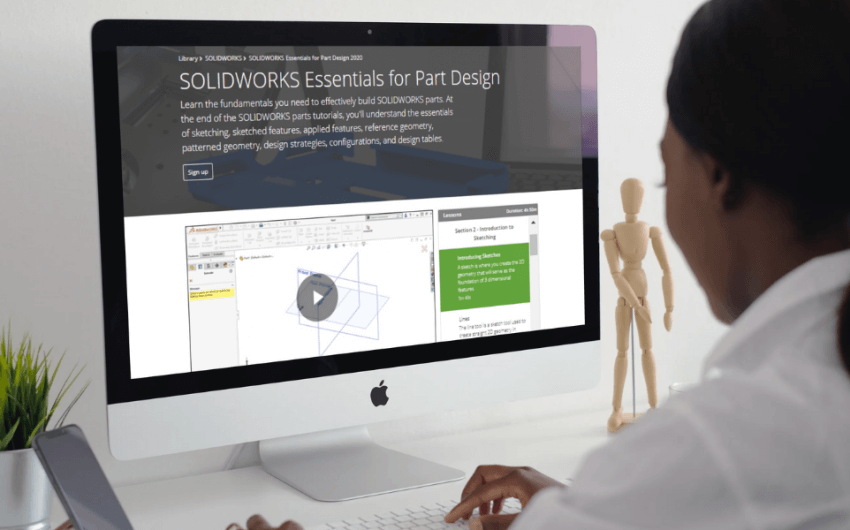- SOLIDWORKS PDM is an advanced Product Data Management system that assists with design, file, and document management for product design teams.
- There are three SOLIDWORKS PDM packages available: Standard, Professional, and Manage.
- Discover the features and tools that each package contains and the different functions they perform.
- Read on to find out which SOLIDWORKS PDM package is best suited for your requirements.
SOLIDWORKS PDM (Product Data Management) is a cloud-based suite of applications to manage product design data and documents, allowing easier collaboration and increased productivity. It’s created for product design teams, as it solves many of the problems associated with collaborative product design and development work. SOLIDWORKS PDM is available in three packages:
- SOLIDWORKS PDM Standard: A data management application that is ideal for smaller businesses working from a single site. It can be upgraded to Professional at a later date.
- SOLIDWORKS PDM Professional: A high-performance, scalable data management application that integrates with third-party CAD applications and Microsoft Office.
- SOLIDWORKS Manage: An advanced, record-based data management system that can be distributed and used across organizations.
READ MORE: SOLIDWORKS Pricing Guide
SOLIDWORKS PDM standard tools and features
Staying true to its target market of product designers and developers, SOLIDWORKS has developed the SOLIDWORKS PDM application to be the ultimate product data management package.
The main function of PDM is to act as version control, an essential and important part of any product design process. But the software goes much further than that, providing tools and features that allow and encourage collaborative working, as well as facilitating overall product lifecycle management.
Data organization
As you might expect, SOLIDWORKS PDM is a very proficient data organizer. This is an important feature for nearly all product designs. When designing any type of product that involves assembly from various parts, data, files, and documents, the process must be organized carefully. Sloppy management is likely to result in files being lost, corrupted, or altered without matching updates to other relevant drawings and docs. Without some form of version control and data organization, time can be wasted trying to locate missing files, fix data anomalies, and retroactively change design drawings.
SOLIDWORKS PDM is fully reference-aware, which means that when you set up the project, everything is linked. In other words, when you change or move any of the referenced files, the reference structure (i.e., every relevant file that references the data or design in question) gets updated along with it.
The data is held securely using Microsoft SQL Server, which indexes all files for fast retrieval.
Powerful search function
If you don’t use some kind of data management system, you’ll likely have to rely on Windows search features to find data, files, and documents. SOLIDWORKS PDM automatically indexes every file relevant to the project you’re working on and allows you to use an advanced and fast search feature to locate them when you need them. This feature is also useful if you want to find details of a component from a previous project because it eliminates the need to search through endless folders.
Secure access control
Data and information security are highly important during the product design stage. No one wants the details of a new product to be leaked before release. SOLIDWORKS PDM allows you to set up secure access control, allowing only people with a unique username and password to access certain files.
Granular control can be set up to allow certain users the right to use restricted operations, control who can move and rename files, etc.
Overall, SOLIDWORKS PDM Standard is most suitable for small- to medium-sized enterprises with small teams working in a single location, on a single product design project at a time.
READ MORE: 5 of the Most Interesting SOLIDWORKS 2020 Updates
SOLIDWORKS PDM Professional additional tools and features
SOLIDWORKS PDM Professional includes all the functionality of PDM Standard, but it adds a number of additional features, which we’ve outlined below.
Enhanced collaboration
The main difference between PDM Standard and PDM Professional is the fact that the Professional version allows more automation, collaboration, and sharing of design data. You can easily collaborate with people working internally and externally. The data is accessible through the cloud and is vaulted at the source, so data cannot be lost.
Other additional features include:
- Advanced Search and Favorites
- Bill of Materials Management
- Engineering Change Management
- Multi-document Preview
- Enterprise Scalability
- Configuration Customizability
- Automated Data Import and Export
- Automated Neutral File Creation
- Automated Approval Process
- Email Notifications
- Serial Number Generators
Overall, SOLIDWORKS PDM Professional is most suitable for medium to large enterprises that require enhanced collaboration capabilities and need the ability to alter management features.
SOLIDWORKS Manage additional tools and features
SOLIDWORKS Manage has all the tools and features included in PDM Standard and Professional, as well as a few additional features.
Improved management tools
SOLIDWORKS extends the capabilities of PDM Professional in three main areas:
- Project Management: Planning and calendar tools, plus other project management tools such as dashboards and reports.
- Process Management: Improves workflows with drag-and-drop sequencers, user tasks, and approval tools.
- Item Management: Create, edit, and manage multiple Bills of Materials.
Overall, SOLIDWORKS Manage is most suitable for larger enterprises that have multiple product design projects underway at any given time, and which have resources distributed across the globe.
























